One of Saturn's Moons Just Got an Amazing NASA Close-Up
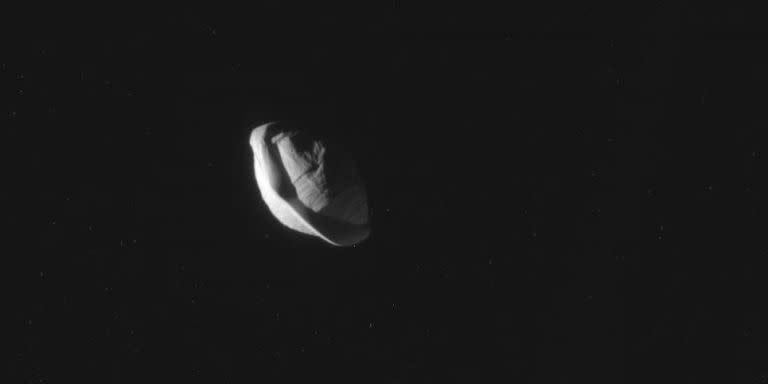
The Cassini spacecraft currently orbiting Saturn just sent back some incredible new images of Saturn's moon Pan. The little moon was imaged closer than ever on March 7, and the images were received on Earth the next day. Cassini flew by Pan at a distance of 15,268 miles on its closest approach.
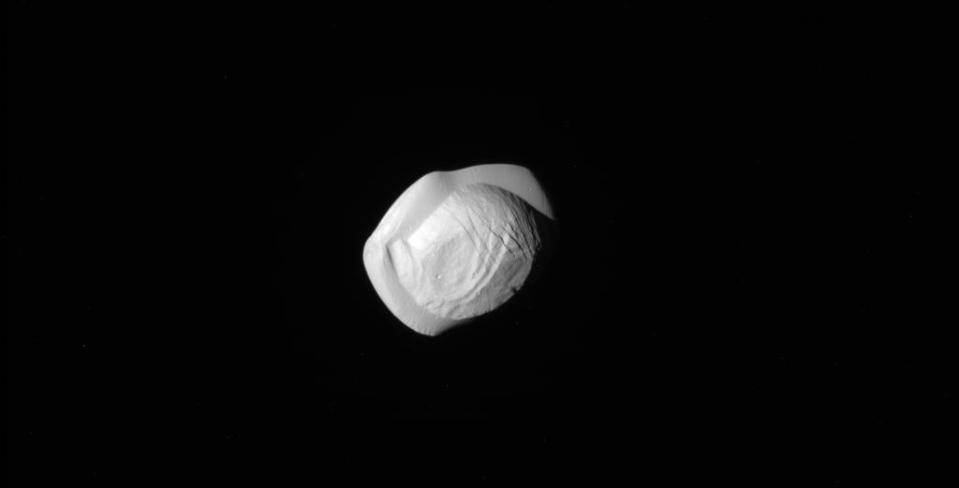
Pan is about 22 miles (35 kilometers) across its longest face, making it one of Saturn's smaller moons. Interestingly enough, Pan orbits closest to Saturn of any of the planet's named moons (a few moonlets orbit closer). It can be found within the 200-mile-wide Encke Gap in Saturn's A Ring. Pan is a so-called "shepherd moon" because it keeps the Encke Gap clear as it orbits, shepherding the particles into place. The little moon accumulates dust from the ring along the way, which is why it has buildup around the equatorial ridge.
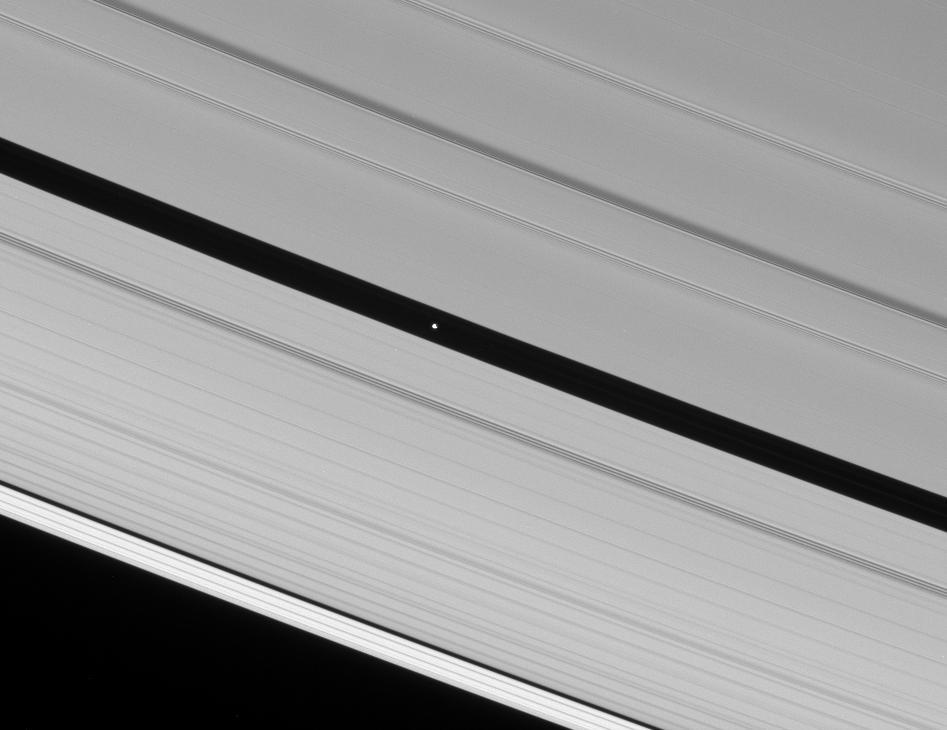
Pan was discovered in 1990 by Mark R. Showalter when he was analyzing old Voyager 2 images from 1981. Like many of Saturn's mysterious features and natural satellites, Cassini has provided a closer look at Pan than anyone would have dreamed when the craft arrived at Saturn in 2004, its primary mission only accounting for four years of science. Earlier this year, Cassini captured another of Saturn's shepherd moons, Daphins the "wavemaker."
The Cassini spacecraft is currently in its "ring-grazing orbits." On April 22, Cassini will adjust its orbit to dive in between Saturn and its rings. The craft will be intentionally crashed into Saturn on September 15, but clearly, Cassini isn't done yet.
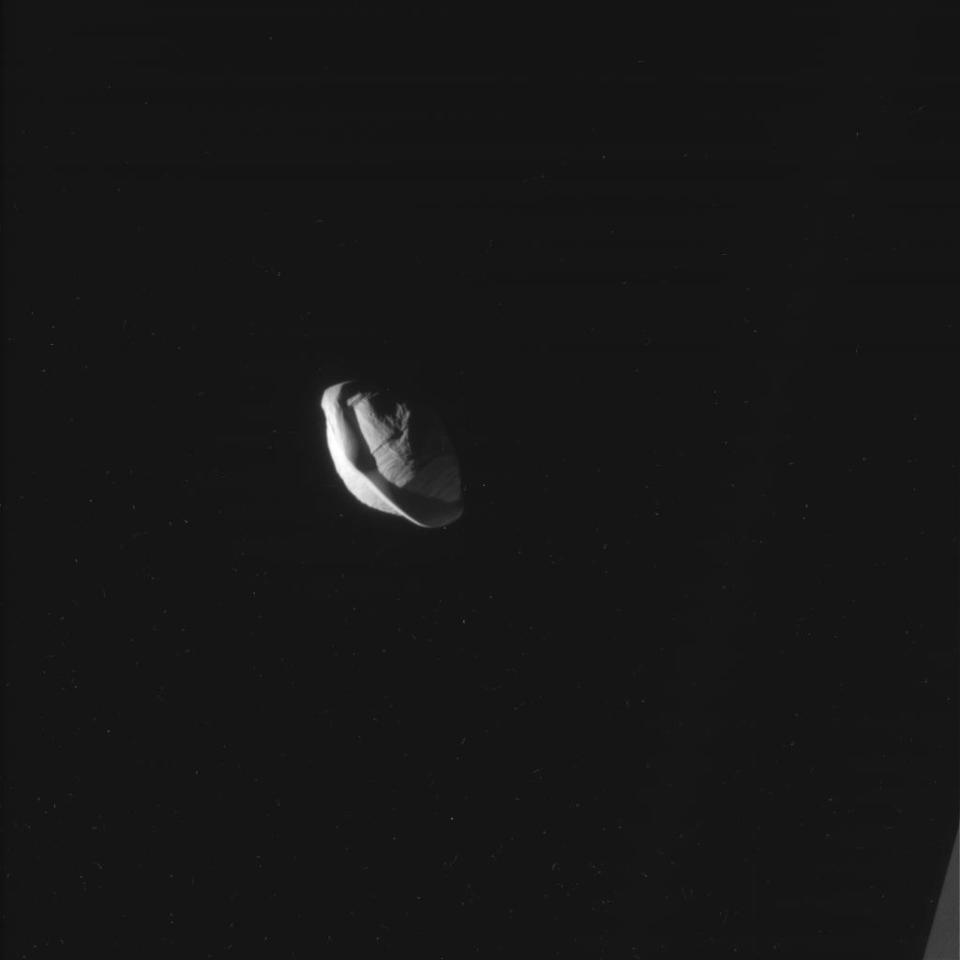
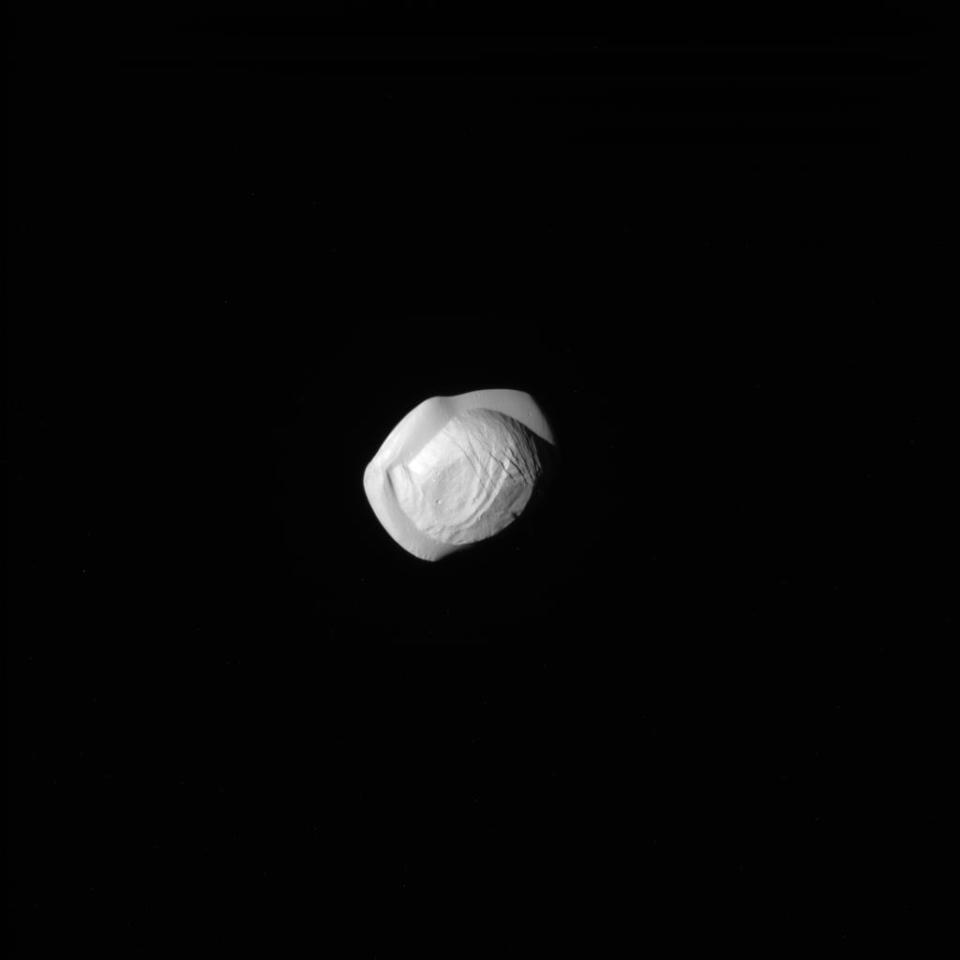
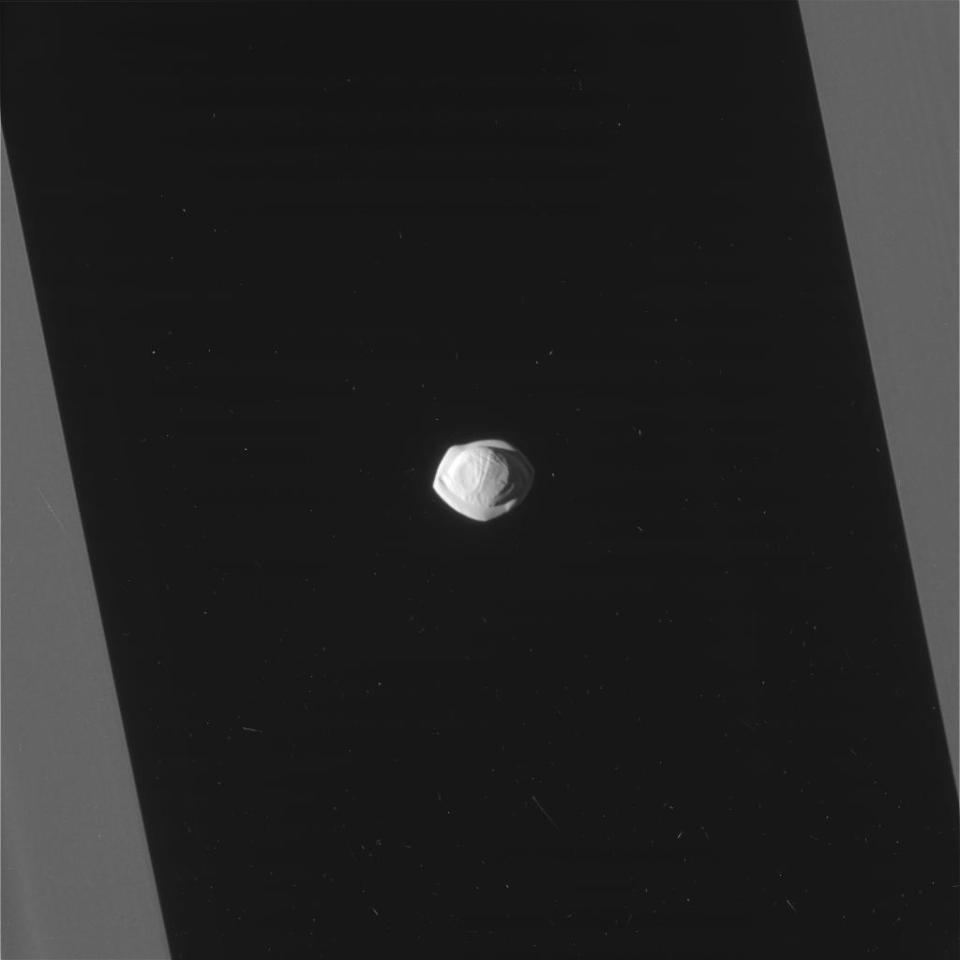
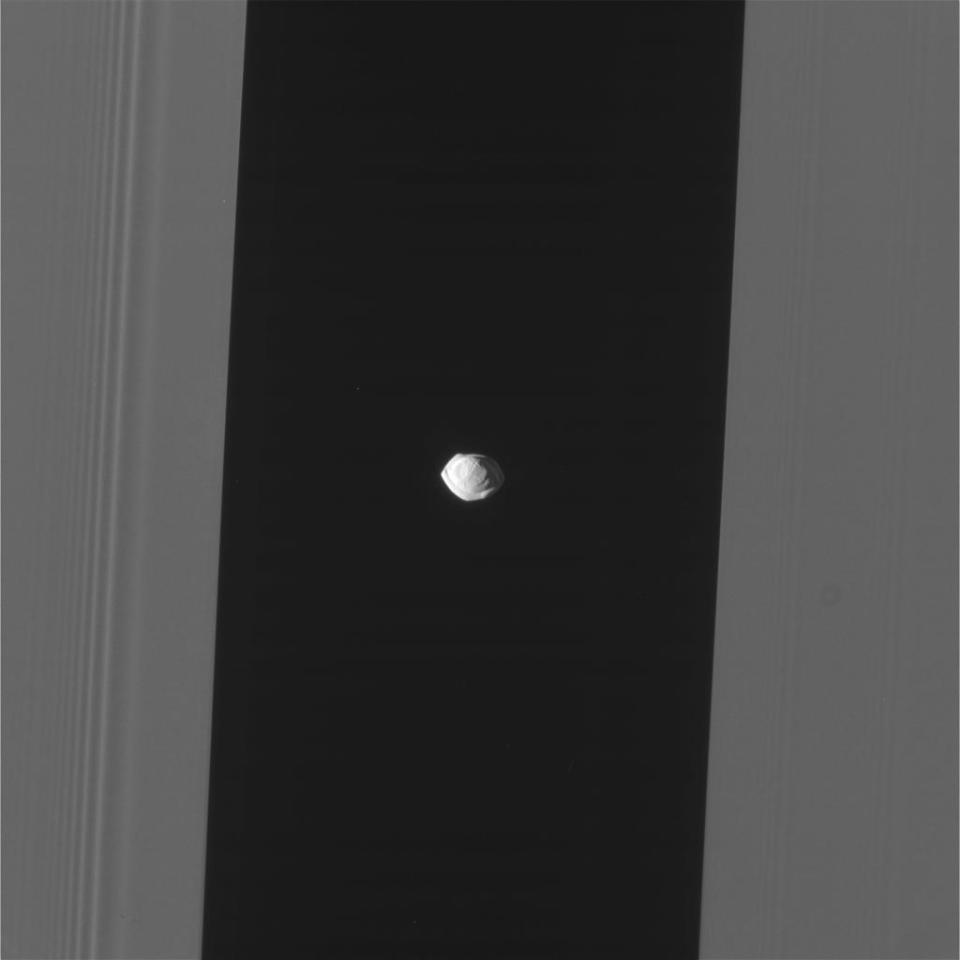
You Might Also Like

